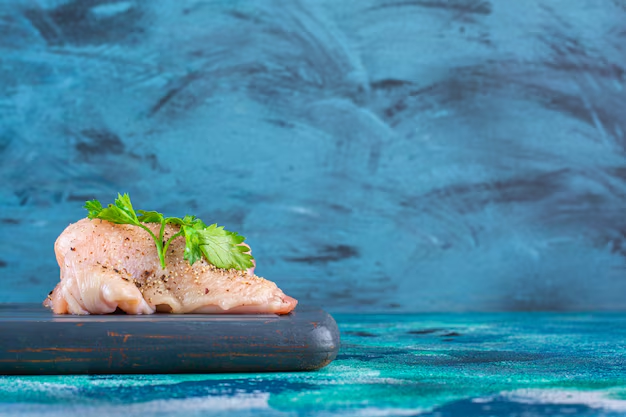How Long Can You Keep Thawed Chicken in the Fridge? 🍗
As you prepare to whip up your favorite chicken dish, a common question comes to mind: How long will a thawed chicken last in the refrigerator? Ensuring your chicken is fresh and safe to serve is crucial—not just for flavor, but for avoiding foodborne illnesses. Dive into this comprehensive guide where we unravel the details behind the shelf life of thawed chicken and offer practical tips for safe storage.
What Happens When Chicken Is Thawed?
Before diving into timelines, it’s helpful to understand what happens at a cellular level when chicken is frozen and then thawed. Freezing meat slows microbial activity, effectively pausing spoilage. However, once thawed, the chicken becomes susceptible to bacteria growth. The environment inside your fridge plays a pivotal role in determining how long it remains safe.
The Role of Temperature
Refrigerator temperatures—typically between 34 to 40 degrees Fahrenheit—significantly slow bacterial growth without fully halting it. This is why temperature control is vital in maintaining chicken's freshness post-thawing. A well-calibrated refrigerator ensures your chicken can last longer.
How Long Does Thawed Chicken Last?
General Guidelines
When it comes to refrigerated, thawed chicken, a rough timeframe can be established:
- Raw chicken: Once thawed in the fridge, raw chicken is safe for about 1 to 2 days.
- Cooked chicken: Cooked chicken that has been thawed remains safe for an additional 3 to 4 days.
Factors Affecting Shelf Life
Several factors can alter these timelines:
- Initial freshness: Fresher chicken prior to freezing may last longer after thawing.
- Type of thawing: Chicken thawed in the fridge typically lasts longer than that thawed under warm water or in a microwave.
- Packaging and storage: Airtight packaging or storage in sealed containers helps extend shelf life by minimizing exposure to bacteria and air.
Best Practices for Thawing Chicken
Safety begins with how you thaw your chicken. Make use of these methods for optimal results:
Refrigerator Thawing 🧊
The safest and most straightforward method is refrigerator thawing. While it might take longer, it ensures the chicken remains at a safe temperature throughout. Simply transfer frozen chicken from the freezer to the fridge and allow it to thaw evenly.
Cold Water Thawing 🚰
When time’s not on your side, cold water thawing is an option. Submerge the chicken in cold water, changing the water every 30 minutes. Remember to cook the chicken immediately after thawing to ensure safety.
Microwave Thawing ⏲️
Using a microwave to thaw chicken is the fastest method, but it requires caution. The chicken must be cooked right after thawing as microwave thawing can unevenly warm the chicken, leading to bacterial growth in spots that begin cooking.
Storing Thawed Chicken: Dos and Don'ts
Correct storage practices can make a world of difference in keeping your thawed chicken safe and flavorful. Here are some handy tips:
Do:
- Keep it cold: Always refrigerate chicken promptly after thawing.
- Use sealed containers: Minimize air exposure by using airtight containers or plastic wraps.
- Label: Mark packages with the thaw date to keep track of freshness.
Don’t:
- Refreeze thawed, raw chicken: The quality drops significantly, and microbial growth is more likely.
- Leave out too long: Avoid leaving thawed chicken at room temperature for extended periods.
Spotting Spoiled Chicken
Recognizing the signs of spoilage is essential to ensure the chicken remains safe to eat. Look out for:
- Unpleasant odor: Any sour or off smell indicates spoilage.
- Slimy texture: Texture changes to sticky or slimy suggest bacterial growth.
- Color changes: A grey or greenish tint is a red flag for spoilage.
The Importance of Safe Chicken Storage
Appropriate handling of thawed chicken is crucial not just for flavor and enjoyment but also for health and safety. Undercooked or poor-quality chicken can lead to foodborne illnesses, which are preventable by following proper storage guidelines.
Tips for Chicken Enthusiasts 🛡️🐔
- Always thaw chicken within safe temperatures either in the fridge or a quick method when necessary.
- Utilize creative dishes that embrace leftover chicken. Extend its shelf life by transforming it into soups, salads, and sandwiches.
- Keep your refrigerator temperature consistent and check its calibration regularly.
Visual Summary: Keeping Your Thawed Chicken Safe
Here's a quick bullet-point recap on safe practices:
- 🧊 Fridge Thawing: Safest method; plan 24 hours for every 5lbs.
- 🚰 Cold Water: Time-saving; change water every 30 minutes.
- ⏲️ Microwave: Fast but requires immediate cooking.
- ❌ No Refreezing: Avoid for raw chicken to maintain safety and quality.
- 👃 Spoilage Signs: Look for bad smells, color changes, and slimy texture.
- 🔍 Keep Records: Note thaw dates and adhere to limits—1 to 2 days for raw, 3 to 4 for cooked.
Understanding these guidelines helps ensure that your chicken dishes are both delicious and safe. By observing these best practices and recognizing the signs of spoilage, you contribute not just to the taste of your meal, but to the well-being of everyone at the table. So, whether you’re baking, grilling, or stir-frying, keeping track of your thawed chicken is a fundamental step to culinary success.
